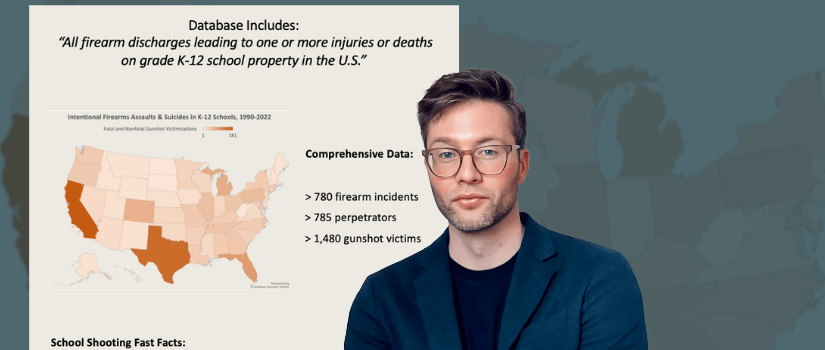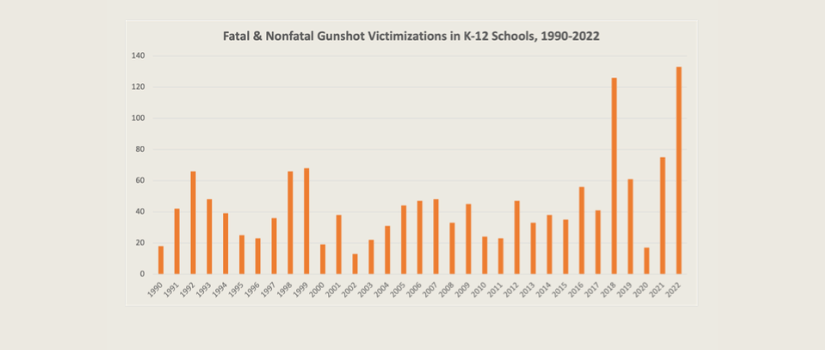Growing up, Brent Klein nurtured a fascination with mysteries and human behavior. In college, he interned at the FBI, where he delved into domestic terrorism investigations.
Today, Klein is focusing his curiosity and his expertise to examine a pressing issue for those growing up today: school gun violence.
It’s an issue that sparks fear and political debate about the causes and the right solutions. But Klein sees data about the crimes as the key to prevention.
“The rate of school shootings in the United States is entirely too high — about 25 a year. My goal by the end of my career is to see that number reduced significantly,” says Klein, a criminology professor at the University of South Carolina.
Klein’s research provides essential insights that can inform policies aimed at reducing school shootings. Despite the widespread media coverage of gun crimes, particularly at schools, he discovered a glaring gap – the absence of an organized system to house information about these cases.
To fill this void, Klein and his collaborators dedicated four years to collecting and coding data from 652 school shooting incidents spanning 26 years. The result is The American School Shooting Study (TASSS), the first comprehensive database of school shootings.
In a recent publication, Klein analyzed findings from TASSS, focusing on the types of firearms used in adolescent school shootings and how they were obtained. The data revealed that these incidents typically involved low- and moderate-powered firearms, often stolen from family members or relatives of the perpetrators.
“These findings inform the debate on how school shooters obtain their firearms and indicate that secure storage of firearms could benefit public health,” Klein stated in the article in The Journal of the American Medical Association.
Contrary to commonly held beliefs about school shootings, Klein’s research dispels the stereotype of mass casualty rampages involving assault-style weapons. Only seven of the 253 incidents he analyzed resulted in mass casualties, defined as four or more gunshot fatalities. Notably, these shootings often involved handguns rather than assault rifles.
Klein emphasizes the importance of this distinction, not only for accuracy in reporting but also because it underscores that mass casualty shootings are much rarer than perceived. This realization points to the need for a nuanced approach to addressing gun violence rather than a one-size-fits-all solution, he says.
“There is a need to respond to the varied threats, harms, types and locations of school shootings more effectively,” Klein says. “Findings from this study can help develop more refined and targeted policy interventions.”
Backed by a grant from the National Institute of Justice (NIJ), TASSS is a national, open-source database, and Klein hopes the availability of this data will provide even more study and insight into the factors involved in school gun violence.
Moving forward, Klein intends to leverage TASSS to understand why adolescents feel compelled to carry firearms in the first place.
Klein is also looking at other data related to violence prevention. With a recent grant from the NIJ, he is studying the role of extreme risk protective order laws — often called “red flag” laws — in reducing gun violence, and how such orders can be made more effective.
Additionally, the Department of Homeland Security is funding a project in which Klein and his collaborators are studying signs that precede a terrorist act to look for ways terrorism can be predicted.
The focus of these studies may be different, but they share the common goal of understanding and stopping violence.
“I want to understand more of the ‘whys’ behind the violence: Why do people get to this point? And what can we do largely as a society to intervene and stop it?” Klein says.

